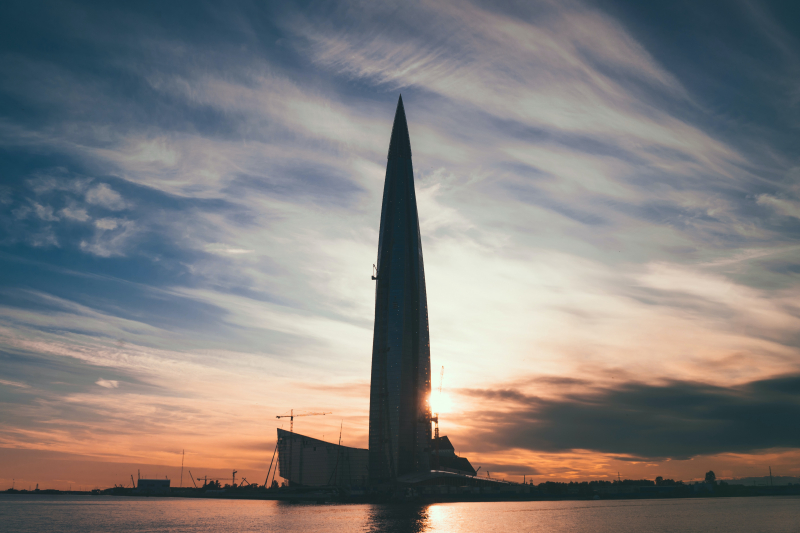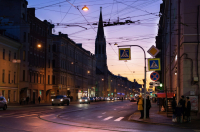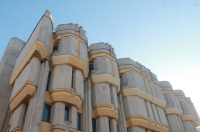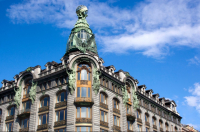Lakhta Center
With its immense height and futuristic style, Lakhta Center, the brainchild of Gazprom Neft, became the number-one trending controversy at the time of its announcement and even remains so to this day. The initial project, called Okhta Center (both versions named after nearby locales), was supposed to be a 396-meter high skyscraper right in the heart of St. Petersburg.
Due to its uniqueness, St. Pete's historical center, a designated World Heritage site since 1991, could never house such a building. The skyscraper would irreversibly alter the cityscape, not fitting into its austere style. The downtown was saved and what was planned to appear near the Smolny Cathedral had to search for a new home.
As a result, Okhta Center turned into Lakhta Center and moved to the shore of the Gulf of Finland. The construction took place over the span of six years, from 2012 to 2018. Throughout it all, the city’s residents kept a close eye on the proceedings. It took around 3,000 workers and three years to erect the tallest residential building in Russia and Europe, which now reaches 462 meters.
Today, it’s a multi-use complex with various facilities and offices fitted with eco-friendly and energy-efficient technologies. Although still not fully welcomed by the public, Lakhta Center has become an integral part of the city’s landscape and won several prestigious contests, including the CTBUH Award of Excellence and the Emporis Skyscraper Awards, in 2020-2021.
New Stage of Mariinsky Theatre (Mariinsky II)
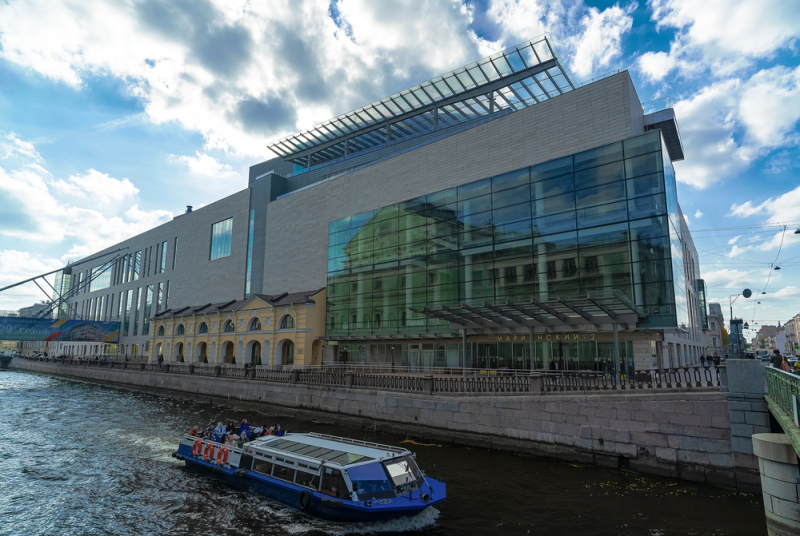
Credit: alexrus707@yandex.ru / photogenica.ru
A similar yet somewhat different story happened with Mariinsky II. Constructed in 1860, the original Mariinsky is a landmark that has become synonymous with classical opera and ballet. Its walls witnessed the premieres of legendary operas by Pyotr Tchaikovsky, Modest Mussorgsky, and Nikolai Rimsky-Korsakov. Taking a grand place on the global stage, the theater had to keep up with the times and expand not only its repertoire but also its premises. The idea was to construct a new stage that would blend the long-standing traditions with cutting-edge technology and design. As a result, the new stage, opened in 2013, instantly became a vexed topic in Russia.
Although the project’s costs were quite staggering, the controversy mostly rose from the exterior of the new building, which was supposed to complement the existing one. The creation of the Canadian firm Diamond and Schmitt Architects, with its gray stone walls, wide panoramic windows, and an open rooftop, would undoubtedly stand out among the city’s classical aesthetic – especially bearing in mind that the new stage was meant to be a literal continuation of the original 19th-century building, the two connected by a footbridge. Although Mariinsky II was often criticized and even compared to a shopping mall, it holds huge potential as the venue of the future and its timeless masterpieces keep captivating people from all over the globe despite all odds.
Gazprom Arena

Credit: ledantu / photogenica.ru
The saga of Gazprom Arena (Krestovsky Stadium, St. Petersburg/Piter Arena, and Zenit Arena) is well known to all residents of St. Petersburg and beyond. Inspired by the idea of replacing the old open-air Kirov Stadium with a modern retractable-roof one, the Japanese architect Kisho Kurokawa created a technologically advanced marvel. The result was a spaceship-like venue with over 80,000 seats in the west end of Krestovsky Island. Initially slated for completion in 2009, the stadium broke ground only in 2016, with numerous construction and technological flaws. Its price skyrocketed to 43 billion rubles at the time (660 million dollars), thus making it one of the most expensive sports facilities in the world. The venue caused quite a stir amongst the residents and became a subject of bitter jokes and criticism.
Once the critical problems were fixed, the stadium became a popular site for various sports and entertainment events. It has already hosted several large-scale events, including the 2017 FIFA Confederations Cup, 2018 FIFA World Cup, and UEFA Euro 2020, and will host the 2022 UEFA Champions League Final next year.
Check out our Architectural Gems and Unexplored St. Petersburg series to gain a full grasp of Russian architecture in all its grandeur and diversity.
